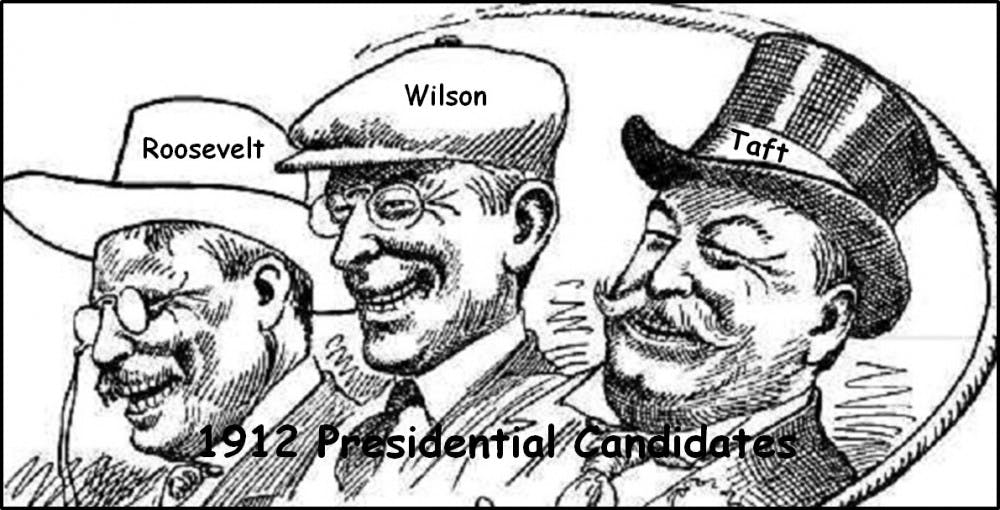by Baris Inan |
As we get closer and closer to this year’s US presidential election, the debates between various presidential candidates are getting more and more interesting. On the Democratic Party side, we have Vermont Senator Bernie Sanders running against Secretary Hillary Clinton. Senator Sanders identifies himself as a Democratic Socialist, promising free college tuition and $15 minimum wage. Senator Sanders joins the Democrat Party in 2015 as this party continues to move towards the left. On the Republican side, Businessman Donald J. Trump is leading the polls with his radical ideas, some of which conflict the US Constitution. These include Mexico paying for a wall on the US border to prevent illegal immigrants and prohibiting Muslims from immigrating to the United States. Trump also joined the Republican Party in 2015.
There is also Michael Bloomberg, billionaire and former mayor of New York City, considering a potential White House run in this election. Bloomberg has not announced his candidacy for the upcoming presidential election yet because he currently supports Hillary Clinton’s campaign. In the past, Bloomberg has sided with both Democrats and Republicans on different issues. Currently, Bloomberg believes that if Senator Sanders and Trump win the Democratic and Republican nominations respectively, a race between the two would leave Americans with a choice between two radical extremes. Under these circumstances, Bloomberg plans to spend up to $1 billion in running as a third party presidential candidate to defeat both of these uncompromising candidates. Bloomberg has until early March to announce his candidacy if he wants to run in all fifty states.
The possibility of three major presidential candidates this election season interested me and made me wonder if there were any past US elections which involved three major candidates. After researching the US presidential elections that occurred in the 20th century, this is what I found out.
Following the assassination of Republican President William McKinley in 1901, his vice president Theodore Roosevelt took office, finished McKinley’s term and served for one more consecutive term as US president. Afterwards, Roosevelt did not seek a third term and convinced his party to nominate his friend and Secretary of War William Howard Taft. Until this time, all US presidents followed George Washington’s precedent of not running for more than two terms. As a result, Taft won the 1908 presidential election and became president.
Interestingly, presidents Theodore Roosevelt and William Howard Taft’s friendship was severed in the following 1912 presidential election. Both presidents began seeking the Republican nomination. Later, Taft was nominated by the conservative wing of the party and Roosevelt failed to receive the nomination. Instead of ending his candidacy, Roosevelt decided to run for president as a Bull Moose Party candidate. The Bull Moose Party was the Bull Moose Progressive Party and consisted of the faction of the Republican Party that considered itself progressive. During the 1912 election, several other Bull Moose Party candidates ran for offices in major states. Along with Democratic Candidate Woodrow Wilson, the three candidates Roosevelt, Taft and Wilson ran for the White House.
The results were devastating for both Theodore Roosevelt and William Howard Taft. Wilson won with 435 electoral votes which were well over the necessary 270. Theodore Roosevelt from the Bull Moose Party came in second with 88 votes while Taft from the Republican Party came in third with only 8 electoral votes. In no other election since then did the Republican Party receive so few votes. This was because the Bull Moose Party represented a split in the Republican Party and it was this split that resulted in a Democratic Party victory. Wilson also received 42% of the popular vote with Roosevelt coming in second with only 27%. Wilson was the second of two Democrat presidents elected between years 1860 and 1932, the other being Grover Cleveland (1885 – 1889, 1893 – 1897).
In the 20th century, there were three other elections where a third party candidate received electoral votes. In 1924, Progressive Party Candidate Robert M. LaFollette, a senator from Wisconsin, won Wisconsin with 13 electoral votes. In 1948, States’ Right Democratic Party Candidate J. Strom Thurmond received votes from five southern states giving a total of 39 electoral votes. Lastly, in 1968, American Independent Party Candidate George C. Wallace received 46 electoral votes with votes from six southern states.
However, none of the third party candidates in the 20th century US presidential elections had a significant impact on the result like in the 1912 election. If Sanders and Trump end up running for president along with Bloomberg, this next election will include two former independents and one independent candidate, a situation that is unique in US history. If these three major candidates run for president this year, Bloomberg may take away some of Sanders’ votes, resulting in a Republican victory. Whatever happens this will be an election that will be remembered in American history throughout years to come.
P.S. As a side note, both Bernie Sanders and Michael Bloomberg are currently 74 years old and if either of these candidates win the presidency, this will exceed Ronald Reagan’s record as the oldest president elected at age 69.
Baris Inan graduated from University of Portland at the end of Fall 2015 with a degree in Electrical Engineering and a Minor in Spanish. He can be reached at inan13@up.edu.








